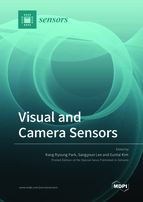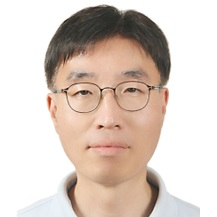Visual and Camera Sensors
A special issue of Sensors (ISSN 1424-8220). This special issue belongs to the section "Physical Sensors".
Deadline for manuscript submissions: closed (31 December 2020) | Viewed by 48201
Special Issue Editors
Interests: deep learning; biometrics; image processing
Special Issues, Collections and Topics in MDPI journals
Interests: human detection and recognition; gesture recognition; face recognition; HEVC
Special Issues, Collections and Topics in MDPI journals
Interests: pedestrian and vehicle detection; recognition; vision for advanced driver assistance systems (ADAS); robot vision
Special Issues, Collections and Topics in MDPI journals
Special Issue Information
Dear Colleagues,
Recent developments have led to the widespread use of visual and camera sensors, such as visible light, near-infrared (NIR), and thermal camera sensors, in a variety of applications in video surveillance, biometrics, image compression, computer vision, and image restoration, etc. While existing technology has matured, its performance is still affected by various environmental conditions, and recent approaches have been attempted to use multimodal camera sensors, and fuse deep learning techniques with conventional methods to guarantee higher accuracy. The goal of this Special Issue is to invite high-quality, state-of-the-art research papers that deal with challenging issues in visual and camera sensors. We solicit original papers of unpublished and completed research that are not currently under review by any other conference/magazine/journal. Topics of interest include, but are not limited to, the following:
- Image processing, understanding, recognition, compression, reconstruction, and restoration by visible light, NIR, thermal camera, and multimodal camera sensors
- Video processing, understanding, recognition, compression, reconstruction, and restoration by various camera sensors
- Computer vision by various camera sensors
- Biometrics and spoof detection by various camera sensors
- Object detection and tracking by various camera sensors
- Deep learning by various camera sensors
- Approaches that combine deep learning techniques and conventional methods on images by various camera sensors
Prof. Kang Ryoung Park
Prof. Sangyoun Lee
Prof. Euntai Kim
Guest Editors
Manuscript Submission Information
Manuscripts should be submitted online at www.mdpi.com by registering and logging in to this website. Once you are registered, click here to go to the submission form. Manuscripts can be submitted until the deadline. All submissions that pass pre-check are peer-reviewed. Accepted papers will be published continuously in the journal (as soon as accepted) and will be listed together on the special issue website. Research articles, review articles as well as short communications are invited. For planned papers, a title and short abstract (about 100 words) can be sent to the Editorial Office for announcement on this website.
Submitted manuscripts should not have been published previously, nor be under consideration for publication elsewhere (except conference proceedings papers). All manuscripts are thoroughly refereed through a single-blind peer-review process. A guide for authors and other relevant information for submission of manuscripts is available on the Instructions for Authors page. Sensors is an international peer-reviewed open access semimonthly journal published by MDPI.
Please visit the Instructions for Authors page before submitting a manuscript. The Article Processing Charge (APC) for publication in this open access journal is 2600 CHF (Swiss Francs). Submitted papers should be well formatted and use good English. Authors may use MDPI's English editing service prior to publication or during author revisions.
Keywords
- Image processing, understanding, recognition, compression, and reconstruction by various camera sensors
- Video processing, understanding, recognition, compression, and reconstruction by various camera sensors
- Computer vision by various camera sensors
- Biometrics by various camera sensors
- Deep learning by various camera sensors
- Fusion of deep learning and conventional methods by various camera sensors








